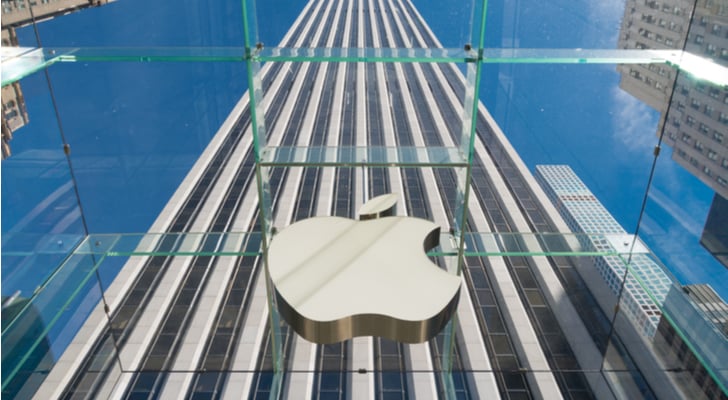It’s deja vu all over again for Apple (NASDAQ:AAPL) stock. AAPL stock is falling as investors worry about the strength of its latest iPhones. Fears about the “commoditization” of iPhones have returned and are pressuring the multiple that investors are willing to pay for Apple stock.
We’ve been here before. In April, an analyst said the iPhone X was “dead.” Worries about the commoditization of smartphones have been a part of the AAPL story for years now. Indeed, I detailed the hardware-related bear case on AAPL over a year ago. And it was three-and-a-half years ago that Brian Wu, on this site, wrote that “one of the favorite pet themes for Apple bears has been the smartphone commoditization theory, as well as the much harped about China factor”.
History may not repeat, but it certainly rhymes. The “China factor” this time around isn’t necessarily based on slowing demand, but rising tariffs. Commoditization continues to be an issue. History suggests that those fears will ebb at some point and Apple stock will rally. The intriguing question is whether this time might be different.
Apple Stock Does It Again
As I pointed out back in August, AAPL stock has had periods of major declines this decade. And the company’s product cycle certainly seems like a possible cause of those declines. Past iPhone launches generally sparked optimism about Apple stock before and immediately after the event, but Apple stock often subsequently retreated. Without a new product on the horizon, it seems, investors start thinking more about the longer term, causing commoditization concerns to become more prominent.
Of course, after the market cap of Apple stock reached $1 trillion, I thought that the cycle might finally have broken, and I doubled down on that argument last month. It certainly seemed as if the positive reactions to the iPhone X, after early concerns, established that iPhone prices could continue to rise for some time.
Also boosting optimism about Apple stock was the fact that AAPL’s Greater China sales rose 16% last year after an 8% decline the year before. And the accelerating growth of the company’s services revenue, which surged 52% over the past two years, drew investors’ focus to the company’s “ecosystem” and seemed to moderate some of the concerns about its cyclical business.
AAPL Stock Starts All Over
But the 2018 post-launch selloff did come after all. AAPL stock has touched a six-month low, giving back the gains it registered heading into the most recent iPhone launch. Microsoft’s (NASDAQ:MSFT) market cap is now higher than that of AAPL stock, enabling MSFT to take Apple’s former title of the world’s highest market cap. And there probably won’t be much good news on the horizon for AAPL.
Worries about the iPhone aren’t going anywhere any time soon. The next iPhones won’t be launched for some time. The product still accounts for 62.7% of the company’s total revenue. Indications of weak smartphone sales have been conveyed by a number of AAPL suppliers, including Qorvo (NASDAQ:
QRVO), Lumentum (NASDAQ:LITE), and Skyworks Solutions (NASDAQ:SWKS).
Fears about smartphone sales still have some validity. The problem for Apple stock – perhaps counterintuitively – at this point is that the iPhone simply is too lucrative. The Apple Watch, for instance, would be a huge hit for any other company. For AAPL, it’s not even big enough to be broken out separately; it’s part of the “Other Products” group that cumulatively generates about 6.5% of the company’s revenue.
Even services probably only generates about 20% of Apple’s profit, assuming that the margins of that business are higher than AAPL’s overall margins. And we’re already seeing companies like Netflix (NASDAQ:NFLX) looking for ways to avoid paying the fee that Apple levies on revenue from apps sold in its store.
The tariff issue may be resolved at some point, but I’m skeptical about whether it’s actually a big part of Apple’s story at this point. There’s a scenario in which China blows up Apple’s supply chain, but, assuming that doesn’t happen, the impact of tariffs on Apple’s earnings seems relatively manageable. The bigger risk may be that Chinese consumers will stop buying American products, hurting Apple’s performance in a market that generates 20% of its revenue. But it will take some time to see if that risk materializes.
Should Investors Buy AAPL Stock?
Of course, AAPL stock has become notably cheaper. Backing out the company’s net cash of about $27 per share, Apple stock now trades at about 11 times analysts’ consensus fiscal 2019 earnings per share estimates, versus a 15+ multiple at the beginning of October.
A forward price-earnings ratio of 11 generally has proven to be a solid entry point into AAPL stock. After all, that figure basically suggests that to drive modest upside in Apple stock, Apple only has to keep its profit flat. With over $200 billion of cash on its balance sheet, Apple can increase its EPS by accelerating its buybacks of Apple stock. The company will likely raise its dividend again in May.
The bull case I outlined above has basically been the bull case for AAPL stock for years. Each cycle has proven that the bears have been wrong or at least early. Time will tell if that trend will continue.
As of this writing, Vince Martin has no positions in any securities mentioned.

